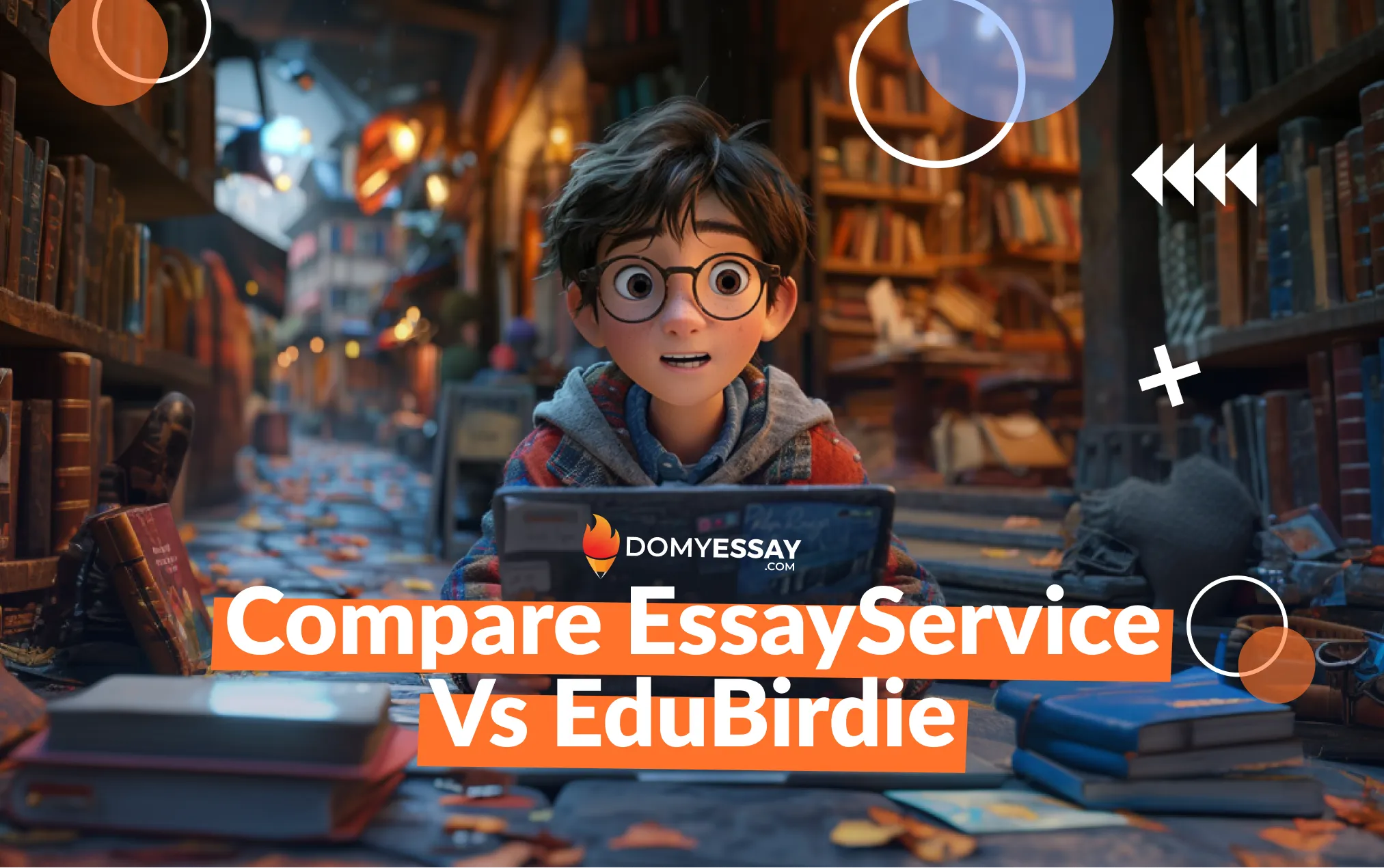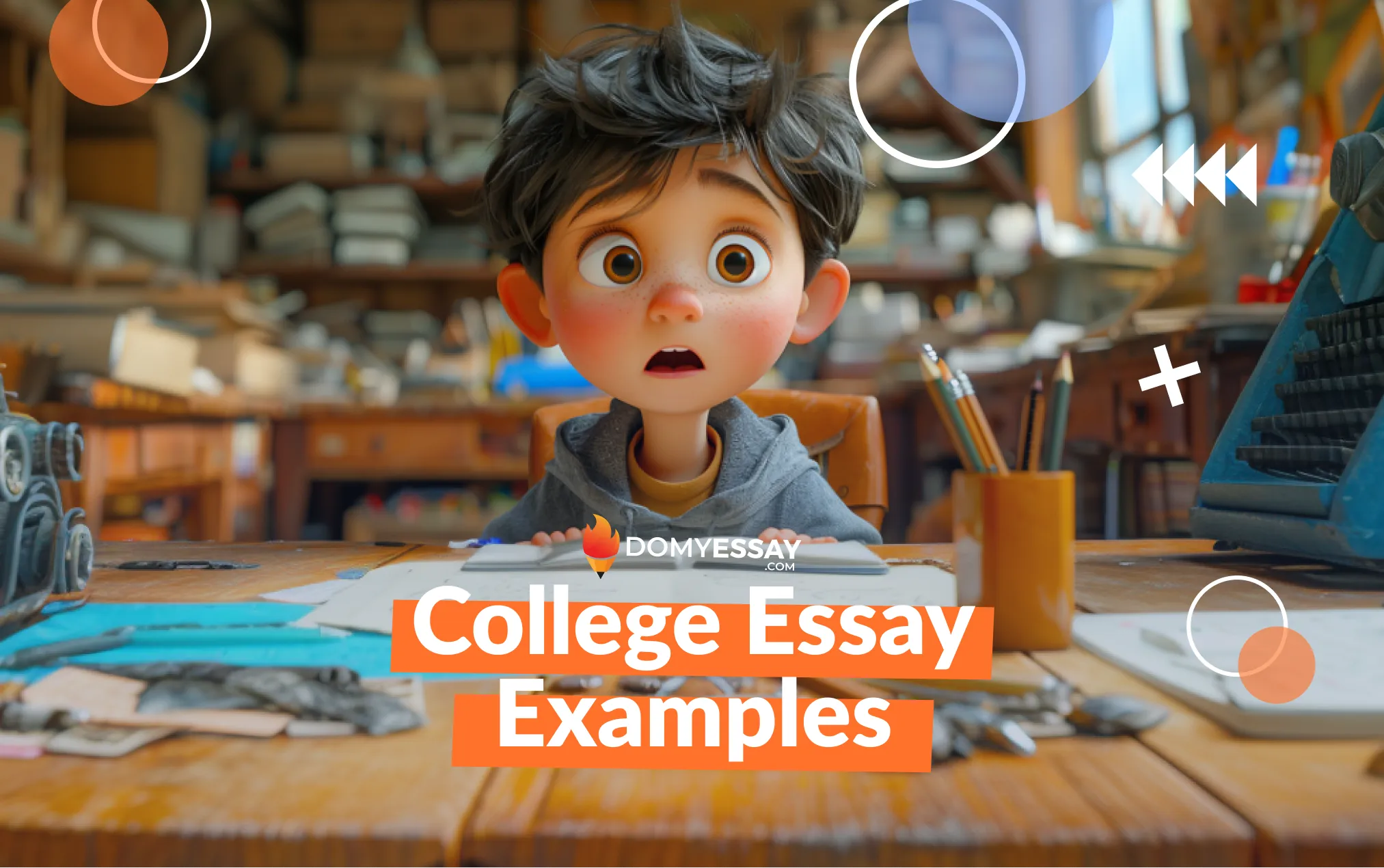Starting a college scholarship essay can feel like a big deal, and it is! Your words are the first thing standing between you and the chance to graduate without student debt. In fact, research shows that students who win scholarships are 40% more likely to graduate debt-free. That’s a huge weight lifted off your shoulders.
But here’s the thing: your introduction paragraph isn’t just about making a good impression — it’s about standing out in a pile of applications.
To help you out, this article will break down an example of how to start a scholarship essay that grabs scholarship provider attention right from the first sentence. We'll show you the strategies for opening with impact, setting the tone for your essay, and aligning your story with what scholarship committees care about.
And look, if after all this you’re still not sure how to hit that perfect note, DoMyEssay is always ready to step in and help. No messy drafts, no pulling your hair out. Just clear writing that does the heavy lifting for you.
Turn Heads, Not Pages
Your story, our words — let’s create an essay that demands attention!

Understanding the Prompt
First things first: don’t rush past the scholarship essays prompt. It’s easy to think you know what the scholarship committee is looking for, but really reading it carefully makes all the difference. Missing a small detail could mean crafting an essay that doesn’t even answer what they’re asking.
Break the prompt down and look closely at what the committee is asking for. Do they want to hear about your leadership experience? Your career goals for the future? Maybe how you’ve dealt with tough situations? Whatever it is, your essay should focus on that. Think of the prompt as a checklist of what the committee wants to see. If you stick to it, you’re already ahead.
If you’re not sure how to organize your thoughts, check out this essay structure guide to help keep everything on track and make sure you’re hitting all the important points.
Brainstorming Ideas
Before you even think about writing, it’s helpful to spend some time brainstorming and just getting all your thoughts out so you have something to work with. Trust me, it’s way easier to start writing when you’ve got a bunch of ideas ready rather than staring at a blank page hoping inspiration will strike.
Here are a few simple ways you can do it:
- Mind mapping: Grab a pen and paper, put your main idea in the middle, and start branching off with related thoughts or stories. It’s a quick and easy way to organize everything visually.
- Free writing: Set a timer for 10 minutes and just write. Don’t worry about making sense or grammar, just write whatever comes to mind. You’ll be surprised at what you can come up with when you stop overthinking.
- Make a list: Sometimes the simplest way works best. Write a quick list of anything relevant to the topic: stories, achievements, challenges. This helps you see what you’ve got and what could be useful.
Crafting a Strong Hook
The hook is the first sentence of your college scholarship essay, and it’s important because it pulls the reader in right from the start. You want them to be curious, interested, and ready to learn more about you. A strong hook sets the tone and gets the reader wanting to read further.
Here are 5 examples of different types of hooks you could use:
- Personal anecdote: “I never thought a broken bicycle could teach me so much about persistence, but that’s exactly what happened one summer afternoon.”
- Bold statement: “I’ve failed more times than I can count, but every failure has led me to where I am today.”
- Surprising fact: “Only 3% of foster kids go on to graduate from college. I’m determined to be part of that 3%.”
- Question that makes them think: “What would you do if you had to choose between paying rent or buying textbooks?”
- Quote: “‘The best way to predict the future is to create it,’ said Abraham Lincoln, and that’s the mindset I’ve carried through every challenge.”
Whatever hook you choose, make sure it connects with the main idea of your essay. It should lead naturally into your story or the point you’re going to make, setting up the rest of your essay with a strong start.
Introducing Yourself
When introducing yourself in a college scholarship application or essay, first impressions matter. You want to stand out in a way that makes the reader remember you. It’s all about finding the right balance between sharing personal stories and showcasing your achievements. Too much focus on one or the other can make your essay feel incomplete.
For example, if you’ve led a community project, don’t just list it. Talk about why it mattered to you and how it shaped who you are. Instead of saying, “I’m hardworking,” show it through a story, like how you worked two jobs while maintaining a top GPA. This way, the committee sees both your personality and your qualifications in action.
And keep the tone in mind as well. You want to come across as authentic and confident, without sounding overly formal or casual.
Aligning with the Scholarship’s Mission
When writing a college scholarship essay, it’s super important to know who’s giving you the scholarship and what they stand for. Every organization has its own values and goals, and they want to support students who align with that. So, before you start writing scholarship essays, do a little research on the organization to understand what matters most to them.
Once you know their values, tweak your essay intro paragraph to reflect that. If they care about leadership, show how you’ve led. If they focus on community service, talk about your volunteer work. The goal is to subtly weave their mission into your story — without overdoing it.
Here’s how you can connect your intro to the scholarship’s values:
Developing a Thesis Statement
A thesis statement is basically the main point of your essay wrapped up in one sentence. It tells the reader what your essay is really about and gives them an idea of where you’re going with your story.
In a college scholarship essay, the thesis should clearly show your goal and how it connects to the scholarship program's mission. Here’s how to keep it simple:
- Focus on your main message.
- Be specific: don’t just say “I want to help people.” Say how and why.
- Make sure it ties directly to the prompt or what the scholarship values.
Here are some examples of clear, strong thesis statements:
- “My goal is to become a first-generation college graduate and use my degree to open doors for underrepresented students like me.”
- “Growing up in a small rural community taught me the value of access to healthcare, and I’m determined to become a doctor who serves similar communities.”
- “Through my experience leading environmental clean-up efforts, I’ve realized my passion for sustainability and plan to pursue a career in environmental policy.”
Mistakes to Avoid in the Introduction
Your introduction matters. It’s your first chance to grab the reader’s attention, and starting off on the wrong foot can hurt your chances.
Let’s talk about some common mistakes students make and how you can avoid them by being clear, using specific examples, and using active voice.
Being Too Generic
Starting with something like, “I’ve always wanted to help people” or “I’m dedicated” is just toooo broad. It doesn’t tell the reader anything unique about you. Instead, get specific and personal. Share a moment that shaped you — something only you could say.
- Weak Example: "I’m passionate about making a difference."
- Stronger Example: "Helping my elderly neighbor fix his roof after a storm made me realize how much small acts of kindness can impact a community."
Using Clichés
Clichés like “I want to change the world” or “I’ve always loved learning” can make your article sound like everyone else’s. The reader has seen it all before. Be original and avoid overused phrases by focusing on your real, specific life experiences.
- Weak Example: "I want to change the world."
- Stronger Example: "After tutoring kids in my neighborhood, I realized how much a little guidance can change someone’s entire academic path."
Starting with a Boring Fact or Statement
Avoid starting a great essay with something dry like, “My name is Sarah, and I’m applying for this scholarship.” This isn’t a form. Your essay should grab attention right from the start. Begin with a personal story, a strong statement, or something that makes the reader curious about you.
- Weak Example: "I’m applying for this scholarship because I need financial aid."
- Stronger Example: "Working two part-time jobs in high school taught me how to balance responsibility and ambition, and now I’m ready to take that to the next level in college."
Finally, don’t overlook the power of proper punctuation! Using it correctly can make your writing clearer and more impactful.
Bring Your Ideas to Life
Turn your ideas into a powerful scholarship essay. We make it easy!

Scholarship Essay Introduction Example
Here’s an example of how to start a college scholarship application essay that feels real, gets attention, and flows naturally:
- Start with a personal, real-life hook:
"When my little brother was diagnosed with autism, our whole family had to learn how to live in a completely different way. I didn’t really get it at first — why he couldn’t just communicate like the rest of us — but over time, I became the one who helped him in a world that wasn’t built for him." - Explain how this shaped you:
"Taking on this role made me see the gaps in how we treat people with disabilities. It wasn’t just about my brother — it was about everyone like him. I became his biggest advocate, not just because he’s my brother, but because I knew kids like him deserved more." - End with a strong, clear thesis:
"This scholarship for the Speech and Language Pathology program will give me the chance to study special education so I can help kids like my brother get the support they need, and make sure they don’t have to face the same struggles alone."
This way, the introduction now clearly ties the story to the specific program you’re applying for.
Let’s Bring It Home
Alright, you’ve got everything you need to write a strong college scholarship essay. Start with a hook that grabs attention, tie it to your personal story, and end with a clear thesis that connects your future goals with the scholarship’s mission. Follow those steps, and you’re setting yourself up for success.
But if you still need some extra help, DoMyEssay’s scholarship essay writing service is here to make the process of college admissions even easier. Less stress, more results!
FAQs
- The College Investor. (n.d.). How to graduate college without student loan debt. The College Investor. https://thecollegeinvestor.com/38787/graduate-college-no-student-loan-debt/
- Children's Rights. (n.d.). College graduation: A bittersweet success for former foster youth. Children's Rights. https://www.childrensrights.org/news-voices/college-graduation-a-bittersweet-success-for-former-foster-youth

%20(1).webp)


